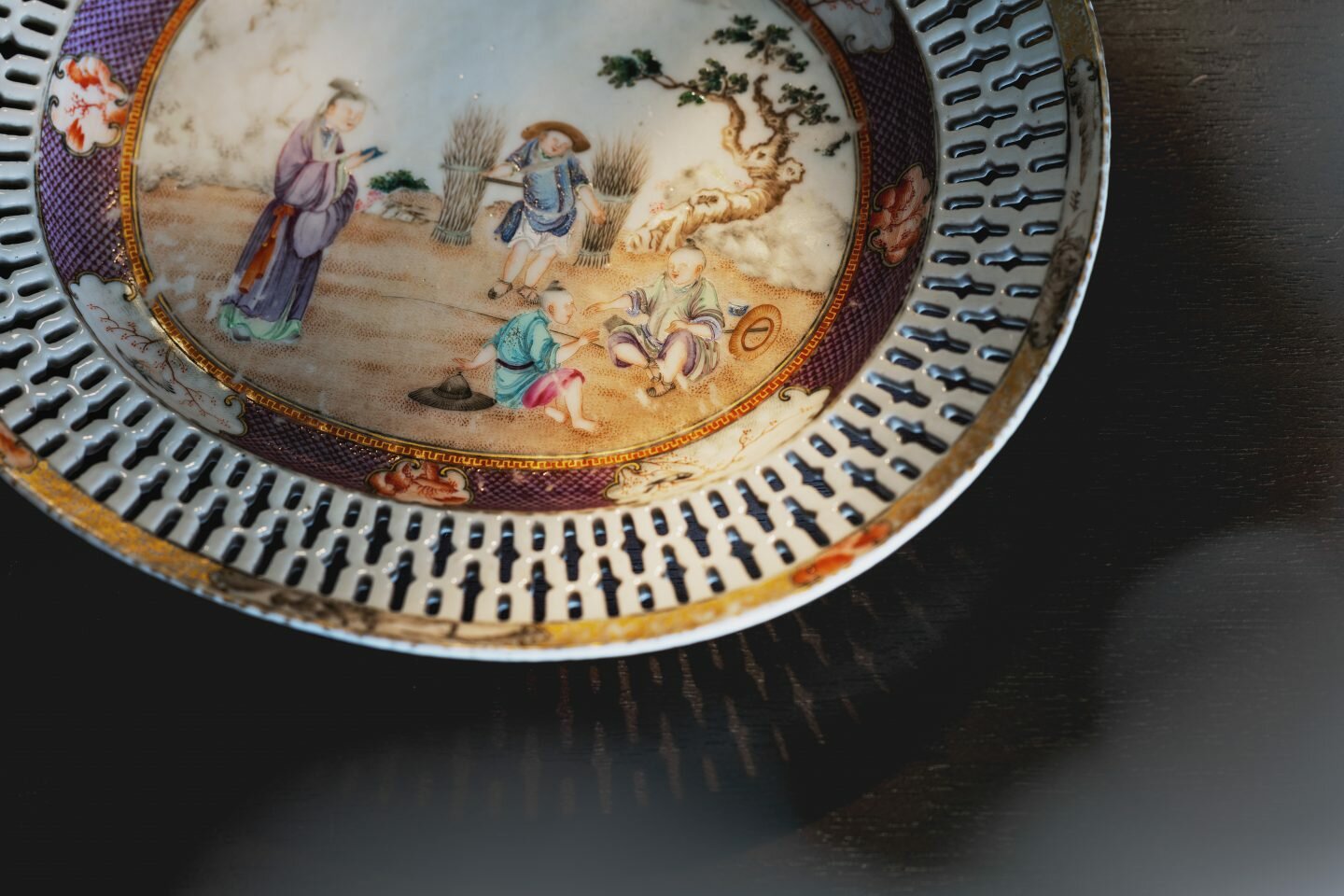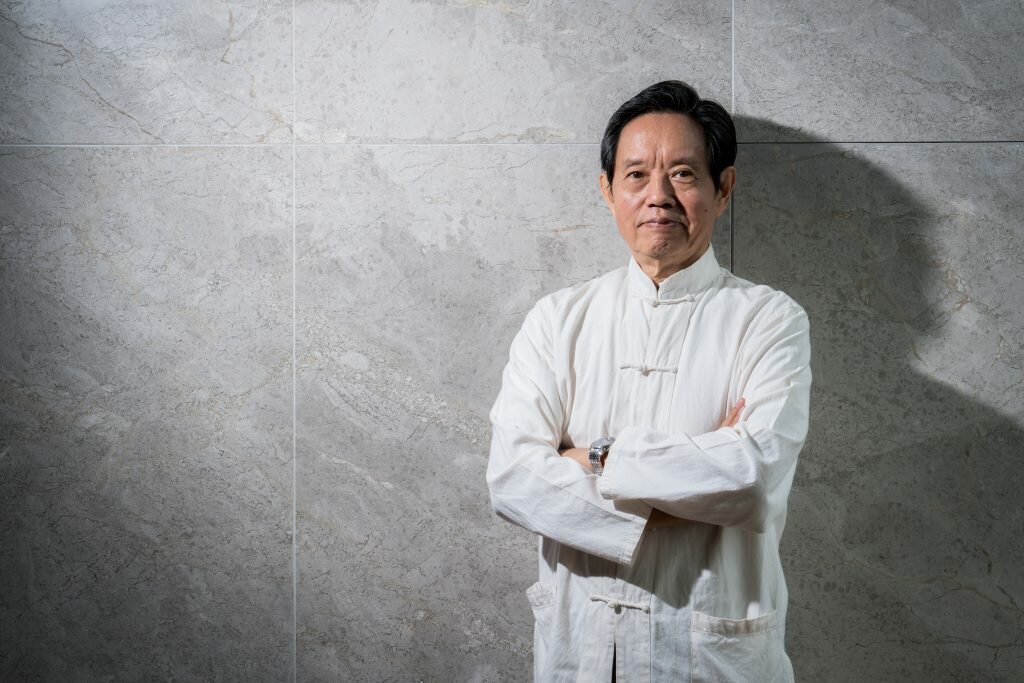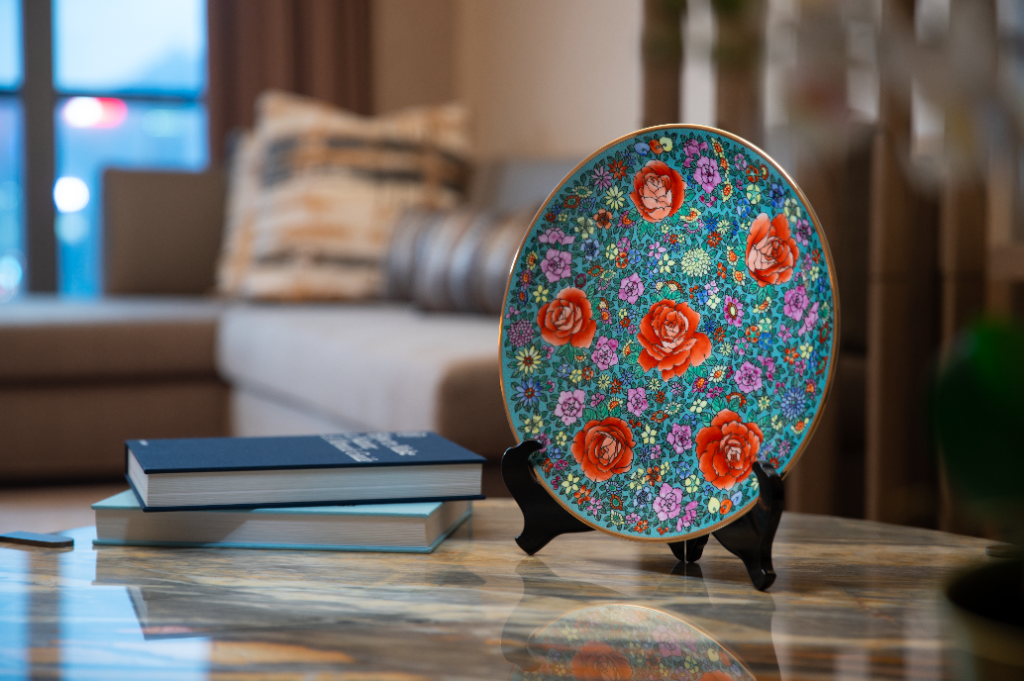How do you tell a valuable piece of porcelain from one that’s average? Run your hands over the surface, which should be smooth and glossy to the touch and be free from bumps. Check if the figures or objects
on the plate, vase or tea set show bright, clean colours that blend light and shade to just the right degree to render the object lively in 3D; the composition and pairings must also depict a clear scene or story.
This may be news to some and common knowledge to others, but what many tend to overlook is that while our minds might conjure up Hermes plates depicting scenes of the jungle or classic Wedgwood tableware, the origins of all porcelain can be traced back to China.
At one point, handmade and hand-drawn porcelain from China was so coveted, the world descended upon its ports to buy pieces by the shipload to bring back to their native countries, where they named their dishware after the country of origin so everyone would be able to appreciate its cachet.
Of the multitude of regional and stylistic variations of ceramics that exist in China, guangcai, also known as Guangzhou zhijin porcelain — a unique hand-painted overglazing technique on white Jingdezhen porcelain — is one of the most revered and internationally coveted forms of Chinese ceramic art. With a history dating back over 300 years, guangcai can be traced back to the Qing dynasty, where it was appreciated by aristocrats for its vibrant colours, refined drawings and rich patterns of flowers, birds and characters depicting scenes from Chinese folklore. The craft was at its zenith following the rise of foreign trade during the Qing dynasty.
“During the Qing dynasty, Guangzhou served as an international port and was in frequent contact with people from the West, who came to China looking to buy silk and porcelain. Westerners would commission pieces of guangcai, asking for specific details such as their family crest to be part of the designs. In order to cater to Western tastes, guangcai masters in Guangzhou married the more colourful 3D techniques of European art with Chinese crafts in order to satisfy these commissions,” explains Master Tan Guanghui, a National-level inheritor of Intangible Cultural Heritage of Guangcai.
Guangcai is distinct precisely because of its unique fusion of Western and Eastern tastes, but the craft evolved out of economic need.
“The art form was adapted to suit the tastes of Western customers who placed sizeable orders,” says Master Xu En Fu. The guangcai master spent over half a century perfecting the art and has nurtured over 150 apprentices and been honoured as one of the 100 Pairs of Hands That Pass On the Culture of Guangzhou. “Guangcai is a result-oriented craft and all the techniques and processes are employed in service to the final desired effect.
“The Chinese use round brushes to draw lines. Colours are used but the effect is flat. Western art utilises shades of colour to show depth and contrast, which is very different from the Chinese way and gives
a very colourful as well as 3D effect. So, for example, when I examine a drawing of a man, I check to make sure there is a roundedness to his shoulders. This fullness in his shoulder is derived from the painting techniques of other regional ceramic makers.”
“What happened was that our tools and techniques remain the same, but we needed to use them in a way that could deliver these very ornate designs because this was during the Rococo period in the West where they wanted every surface filled with a profusion of colour and design. This is also why we use gold in our designs much more than other ceramic artists in China.”
This result-centric approach remains a guiding principle. Xu is among a number of craftsmen commissioned by K11 Craft & Guild Foundation. The arts and culture non-profit — established by Hong Kong cultural entrepreneur and CEO of New World Development Adrian Cheng — aims to conserve and rejuvenate endangered Chinese crafts by creating an ecosystem that educates the public, provides a platform for the crafts to be seen and sold, and by commissioning pieces from artists.
Displayed at K11 Artus in Hong Kong among Chinese crafts like baibaoqian, Xu’s Guangcai Manhua Rose Plate brings together fine overglazed Western roses amid a profusion of floral sprays that
is characteristic of the abundant floral manhua design style.
“We don’t necessarily have a design set in stone when we approach a piece and that was the case for the plate I worked on for K11,” says Xu.
“I worked on creating different pinks at first and blasted them in the furnace to check that my method would yield the correct colour. The initial tests gave flowers that were quite flat and wasn’t representative of what we can achieve, so I redesigned the pattern to what you see now, where the pinks are created using a form of finely powdered glass which we blasted in the furnace to achieve a glossy effect.”
“When I first got into the business, I arrived at my apprenticeship with some knowledge and interest in painting, but what is required of painting for guangcai is entirely different to painting on canvas where you can adjust the colours as you go. There is room for error. But painting on guangcai requires advance consideration of what the colour will look like once it’s been put through the furnace, and that requires experience and training.”
Most of the existing masters of guangcai have been working for decades, with many approaching retirement. But given the declining interest from younger generations, the future of the craft is uncertain. Listed as a national intangible cultural heritage item in China in 2008, there are currently fewer than 100 practising guangcai craftsmen in Guangzhou and several in Hong Kong, but only a handful are familiar with the production of traditional base colour ingredients. While both masters have trained over 200 apprentices between them, they express disappointment even if they understand the reasons behind the lack of interest in the craft.
“In the 1970s when I began my apprenticeship, there was less choice and we were placed into our jobs,” says Tan. An apprenticeship lasted three years and covered line drawing, colour, fill, design and the different temperatures of a furnace and the glaze and colour that differentiations in heat will yield, step by step. Apprentices had a strict curriculum, and followed their master’s bidding.
“All of us apprentices were given wages, food and board by the workshops that we were placed at. Because that was the time of a planned economy, once apprentices were accepted, they would stay put for decades and be enthusiastic about their work because there weren’t really any other options, which was great for passing down this craft. After 2000 and the switch to the market economy and privatisation, this apprenticeship system held less weight as there were more choices for everyone.”
These days, guangcai masters count themselves lucky if they manage to pass on their skills to apprentices who are willing to devote their life to the craft. Tan has been working with vocational schools in Guangzhou to train students in a system that somewhat mirrors the three-year apprenticeship of his youth. This has seen some success, with students going on to establish private workshops and becoming recognised by the Guangzhou government. Xu, meanwhile, is training his daughter to follow in his footsteps.
Both masters are quick to admit that producing guangcai is no easy feat. With each plate taking up to a week to complete with perhaps two or three turns in a furnace — once for colour, the second blast to secure the gold powder and a third in case of error — everything requires painstaking attention to detail that would be impossible if the creator didn’t have a particular predilection for his or her craft.
“I don’t have an apprentice who is at a level where he or she can teach others and stand on his or her own. I really don’t have anybody who fulfils that criteria, so I’m glad that K11 has stepped in to support our craft and made the effort to revive it and to teach others about it,” says Xu.
“In my life, I’ve been very fulfilled because I chanced upon a craft that I really love and have been able to continue doing even at the age I am now. Even now, I’m still learning and I enjoy continuing to learn about the craft and finding new ways to produce different effects. And to be able to feel satisfied with my work and to leave those pieces behind for others to enjoy, I think not many people get this opportunity so I do feel extremely privileged to have been able to spend my life working on pieces that I can count as a small legacy to leave behind. And to be able to give others joy is a joy in itself.”




